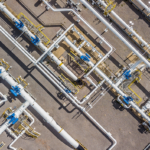Introduction
Hydraulic studies have been a long-standing requirement for pipeline operators to ensure a safe, and efficient delivery of fluids. North American regulations (ASME B31.4 and CSA Z662) stipulate that pipeline pressures do not exceed Maximum Allowable Operating Pressure (MAOP) limits, even for a short period of time. Hydraulic studies provide assurance that a pipeline can be operated safely in worst-case scenarios and are applicable to the transportation of all fluids, including water, crude oil, natural gas liquids (NGL), gasoline/diesel.
In this post, we will provide a brief overview of what’s involved in a hydraulic study, and when you should consider initiating one.
…Hydraulic studies can provide tremendous value in understanding both the risks present in a new or modified fluid system, as well as maximizing operational capacity.
What is a Hydraulic Study?
A hydraulic study assesses both the steady-state (during operation) and transient (short-term change) flow conditions of a fluid pipeline, ensuring safety risks are mitigated and operating limits are appropriate. The study can look at these conditions within a pipeline terminal, as well as in mainlines between terminals, and is typically performed using computer simulation and engineering judgment.
Steady-state studies verify that fluid pressures, velocities, and flow rates are within acceptable limits (as defined by code, client standards, and equipment requirements). These are assessed at worst-case conditions, varying fluid density, temperature, and flow rates.
Transient studies verify, that in a transient scenario, the system is designed to safely withstand surge pressures that occur in the fluid. Transient scenarios typically include the closure of a valve or stopping of a pump in a short period of time, leading to potentially dangerous waves of pressure through a pipeline. This is typically referred to as the water-hammer effect [1].
Based on the results of these studies, mitigations can be suggested to ensure appropriate operation. Often these include modifying equipment, maximum or minimum flow rates, tank levels, or control logic. Together, with discussion and collaboration with client stakeholders, a safe and cost-effective solution can be generated.
Why are Hydraulic Studies Important?
Hydraulic studies are a critical part of any new project or existing infrastructure where hydraulic changes are planned. It is a violation of the Canadian and US regulations for petroleum pipelines (Canada – CSA Z662 4.18 and United States – ASME B31.4) to operate a pipeline at pressures in excess of 110% MAOP even for short periods of time.
Even small changes to hydraulic conditions can result in short and long-term risks for an operation. A hydraulic study can pinpoint improvements to operational bottlenecks, equipment health risks, nuisance trips and fluid limits.
Three Catalysts for Initiating a Hydraulic Study
New system design
Clearly, any new pipeline system is required to abide by pressure regulations, with hydraulic studies being the most common and way to demonstrate safety compliance. Every situation or facility has unique characteristics, elevations and equipment that can make predicting pipeline safety impossible.
The reversal of a pipeline, addition of loading arms, or repurposing of equipment are examples of a new design that could require hydraulic study and expertise. Studies are often initiated early in the design phase, with models built off of early drawing revisions — this allows the recommendations of the study to be implemented with a lower impact on the project budget.
Changes to Key Equipment
Any changes to key equipment in a fluid system have the potential to impact both steady-state or transient behavior. Of highest interest is the change of pumps, block valves, control valves, and relief valves:
- Different pumps (mainline or booster) can bring significant changes to pump curves, best efficiency points, and pump inertia.
- Small changes to block valve type, closing times, or loss characteristics can change how surge pressures are generated.
- Replacements of control valves, or modifications to control parameters (high pressure shutdown setpoints or timing) can change how the valve reacts to transient events
- Changes to surge relief valve types, sizing, or pressure setpoints can change the protection that is present.
Changes to Operations
Examples of changes to operations, include:
- Changes in flow rate limits
- Changes in fluid properties
- Changes to tank levels or pressures
Closing
In closing, hydraulic studies can provide tremendous value in understanding both the risks present in a new or modified fluid system, as well as maximizing operational capacity. There are a multitude of reasons to initiate a hydraulic study, and we are happy to provide guidance as to the scope of investigation that is needed for your specific project scope.
In future posts, we hope to go in-depth on the Venturi approach to hydraulic studies and the mitigations we can recommend to improve the safety and sustainability of your system. We hope this has provided valuable insight, and we are happy to discuss further your specific needs with our experienced team.
Sources and Further Reading
IPC2012-90684 – A Rational Methodology for Detailed Pipeline Transient Hydraulic Analysis – Gabriela R, Bogdan P https://doi.org/10.1115/IPC2012-90684


